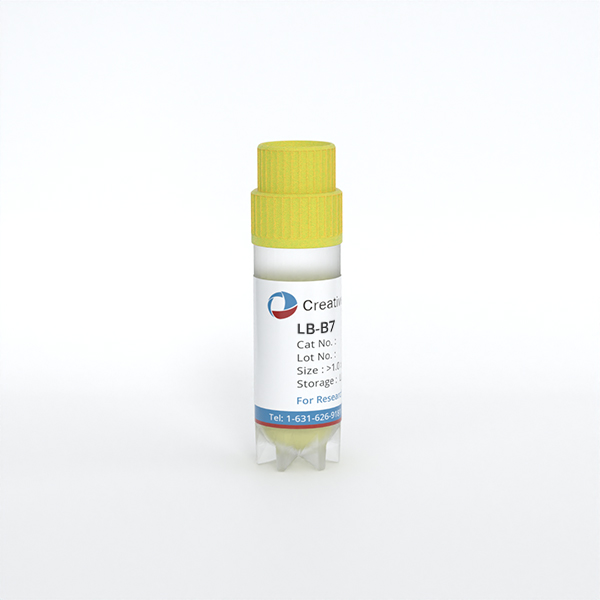Featured Products
Our Promise to You
Guaranteed product quality, expert customer support

ONLINE INQUIRY

PEER
Cat.No.: CSC-C6359J
Species: Human
Morphology: other
Culture Properties: Suspension cells
- Specification
- Background
- Scientific Data
- Q & A
- Customer Review
- Documents
Store in liquid nitrogen.
PEER cells are a human T cell line that was derived from acute T cell leukemia. These cells serve as a valuable tool for studying the characteristics, behavior, and underlying mechanisms of T cell leukemia, a type of cancer originating from T cells.
Researchers utilize PEER cells to explore various aspects of T-cell leukemia, including the identification of specific genetic mutations, dysregulated signaling pathways, and aberrant gene expression profiles. These investigations aim to uncover potential therapeutic targets and develop novel treatment strategies for this aggressive form of leukemia.
In addition, PEER cells have been employed in preclinical research to evaluate the efficacy of potential anti-leukemic agents, such as chemotherapeutic drugs, targeted therapies, and immunotherapies. The use of PEER cells in drug screening and testing contributes to the development of personalized treatment approaches and the advancement of precision medicine in T-cell leukemia.
Establishment and Characterization PEER Cell Line
The PEER cell line exhibited a typical lymphoid morphology. The results of several cytochemical and enzyme tests performed in Israel shortly after the line was established are shown in Table 1. Acid phosphatase had a focal distribution (Fig. 1) which is typical of T-acute lymphoblastic leukemia (ALL).
Table 2 summarizes the results of membrane (cell surface) and intracellular marker tests. PEER cells lack the common ALL antigen and do not express Ia/HLA-DR antigens (two rabbit, one chicken anti-Ia p28, 33 and one murine hybridoma/monoclonal antibody-DA2/anti-HLA-DR "framework") or T-cell antigens (two rabbit and one hybridoma antibody, NA134 which detects a "TL"-like (45K) cortical thymocyte antigen) which are found on most cases of T-ALL and T-ALL cell lines. Positive results were observed with monoclonal antibodies specific for p2 microglobulin (EC3) and HLA-ABC "backbone" determinants (W6/32), monoclonal P17F12 which defines a new T-cell antigen, and a horse anti-human thymus serum which defines a T-cell subset (THZ) with suppressor-cell functions.
Peanut agglutinin (PNA) which is reported to react with immature T cells and T-ALL was also negative although, as on all cells tested, a binding site for PNA could be exposed by neuraminidase treatment of the cells. Both sheep and mouse rosette assays (T- and B-cell markers respectively) were negative as were the EA and EAC tests. Hexosaminidase isoenzyme peak I, which is usually expressed in the common form of ALL but not in T-ALL, was absent, and there was no staining for either cytoplasmic or cell surface Ig.
 Fig. 1 PEER cells showing strongly positive para nuclear stain with acid phosphatase. (Ravid Z, et al., 1980)
Fig. 1 PEER cells showing strongly positive para nuclear stain with acid phosphatase. (Ravid Z, et al., 1980)
Table 1. Cytochemical and enzyme tests of the PEER cell line. (Ravid Z, et al., 1980)
| Cytochemical and enzyme tests | Test results |
| Sudan black Peroxidase Non-specific esterase Acid phosphatase Oil red PAS Muramidase | Negative Negative Positive (4+) Positive (4+) Negative Positive (4+) Negative |
Table 2. Cell surface and intracellular marker studies on the PEER cell lines. (Ravid Z, et al., 1980)
| Cell surface markers | Test results | |
| Antisera | Rabbit anti-monkey thymus (MT) Rabbit anti-human thymus (HT) Horse anti-human thymus (TH2) Monoclonal NA134 Monoclonal P17F12 Rabbit anti-p28,33 Chicken anti-p28,33 Monoclonal DA2 Monoclonal anti-HLA ("framework")W6/32 Monoclonal antiβ2 EC3 Goat (and rabbit) anti-glycophorin Goat anti-human Ig | - - + - + - - - + + - - |
| Peanut (Arachis hypogaea) agglutinin3 | No neuraminidase + neuraminidase | - + |
Compared to serum and tissue samples, cells are rich in metabolites but low in them. For metabolomics experiments, it is generally necessary to culture and harvest at least 106 cells, and to ensure that metabolites can be detected by the instrument as much and as comprehensively as possible, it is recommended to collect 107 cells for metabolomic experiments.
PEER cells are a human T cell line derived from acute T cell leukemia. They are cultured cells that serve as a valuable tool for studying the characteristics and behavior of T cell leukemia.
PEER cells are used to investigate various aspects of T cell leukemia, such as genetic mutations, signaling pathways, and gene expression profiles. They are also employed in preclinical research to evaluate the effectiveness of potential anti-leukemic agents.
While PEER cells were derived from acute T cell leukemia, they can also be used as a model system to study other T cell-related diseases. Researchers can explore shared molecular mechanisms and pathways to gain insights into various T cell disorders.
Ask a Question
Average Rating: 5.0 | 3 Scientist has reviewed this product
Good performance
Using Creative Bioarray's tumor cell products, I have been able to obtain high-quality, reliable experimental date.
03 Apr 2022
Ease of use
After sales services
Value for money
Pleased results
I recently incorporated PEER cell products from Creative Bioarray into my drug discovery project, and I am pleased with the results.
11 Feb 2024
Ease of use
After sales services
Value for money
Highly recommend products
The cells were of high quality, displaying the expected characteristics of T-cell leukemia. I highly recommend Creative Bioarray for their reliable and effective PEER cell products.
12 May 2023
Ease of use
After sales services
Value for money
Write your own review
- You May Also Need







